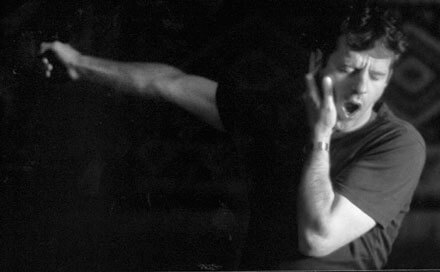Belgian director Lucas Belvaux explores genres, storytelling in trio of films
The release of three films with common characters helmed by one director in a two-week span certainly seems like a trick to coax you out of $30 or more, doesn’t it?
Director Lucas Belvaux has spent the better part of a decade working on the scripts of “On the Run,” “An Amazing Couple,” and “After the Life,” the films that comprise his recently released trilogy. Fascinated by the idea that minor characters in one movie might be major characters elsewhere, Belvaux has created a set of films in which this is exactly what happens. The woman who shows up to inspect her mountain home in one movie, who only appears twice for a few minutes, is the heroine of her own film. The cop and his wife who are seen separately in two films are the centerpiece of a third.
What Belvaux is doing is not necessarily new to French auteurs or authors. As early as the 19th century, both Emile Zola and Balzac wrote novels in which a minor character passing through one book is the hero of another. Francois Truffaut managed to find a place for one of his characters in four films over 20 years.
Belvaux’s stab at this storytelling device works by being diverse in his choice of genres, and by making sure each film can stand alone storywise. “On the Run” is crafted as a nonstop thriller; “An Amazing Couple” is a screwball comedy, the sort of thing you don’t see out of France these days; and the third, “After the Life,” is a classic melodrama.
These three types might not appeal to every moviegoer, but seeing how all three work in relation to one another and comparing them for yourself is part of the fun. Viewing all three films creates a fourth entity––each viewer’s unique comparison of the films.
As thrillers go, “On the Run” is one done completely in human terms, without computer-enhanced imagery or 007-style special effects. And unlike the typical action thrillers that have the requisite digital-clock-detonation deadline, you have no idea how Bruno le Roux’s one-man rampage is going to end. Director Belvaux, who plays Bruno, keeps everything on a manageable scale. From the time Bruno is broken out of jail to the film’s desolate ending, everything Bruno does is believable. He bleeds, he commits crimes without batting an eye, and he is even forced to run barefoot to escape at one point.
“On the Run” is filmed using only existing light, and Bruno is very often in the dark, literally and figuratively. Jailed for his part in radical-left terrorism, he still believes in a lot of the agit-prop slogans he keeps repeating. His closest relationships are with Jeanne (Catherine Frot), an old cohort who now leads a conventional family life, and Agnes (Dominique Blanc), a heroin addict he saves from an abusive would-be dealer. There are some humane moments in these relationships, but ultimately, they are a means to his ends. Watching Bruno operate is fascinating, not because he is evil, but because he has completely deluded himself into believing his violence is somehow justified by a final, greater good.
“An Amazing Couple,” the second film––though the first released in France––provides a sharp stylistic departure from “On the Run.” In this film, we see a husband and wife who are completely innocent of any infidelities, but suspect one another anyway. Alain Costes (Francois Morel) fears his wife is cheating on him, so he hires a cop, Pascal Manise (Gilbert Melki) to tail her. Alain’s behavior is so erratic that Cecile (Ornella Muti) spies on him as well. Jeanne and Agnes, it turns out, are friends of Cecile. Neither of the two women is clued into Alain and Cecile’s problems, and their actions end up drawing suspicion onto themselves. When Bruno makes an appearance here, it is scant.
The film’s comedy is based in the cluelessness of Alain and Cecile. Pascal, the cop Alain hires to trail his wife, ends up falling for her.
The coda to the trilogy is the melodramatic story of Pascal and his wife, who is none other than Agnes, the heroin addict. The basis of their relationship is Pascal’s ability as a cop to get hold of clean heroin, so she can maintain a life and an addiction simultaneously. But even among a famously corrupt Grenoble police establishment, Pascal comes to be considered a disgrace and is cut off from his supply. Only by finding and capturing Bruno can Pascal hope to win back his access to the heroin.
During the crisis Agnes faces in being cut off from her addiction, Bruno becomes her savior. But if Agnes is able to live without her addiction, what will become of her marriage to Pascal––can they live as husband and wife when they have really just been dealer and junkie all this time? “After the Life” presents two devastated, corrupted people who both face the crisis of having to go clean.
Three movies, three genres, but a lot of interpretive possibilities. It’s doubtful viewers will like all three films equally, but Belvaux’s interlocking trio of films is bound to please many moviegoers. Even if you’re not thrilled with one of the three films, seeing the same scene shot from a different angle, fitting it into the puzzle in a different way, will likely still be a satisfying experience.


































